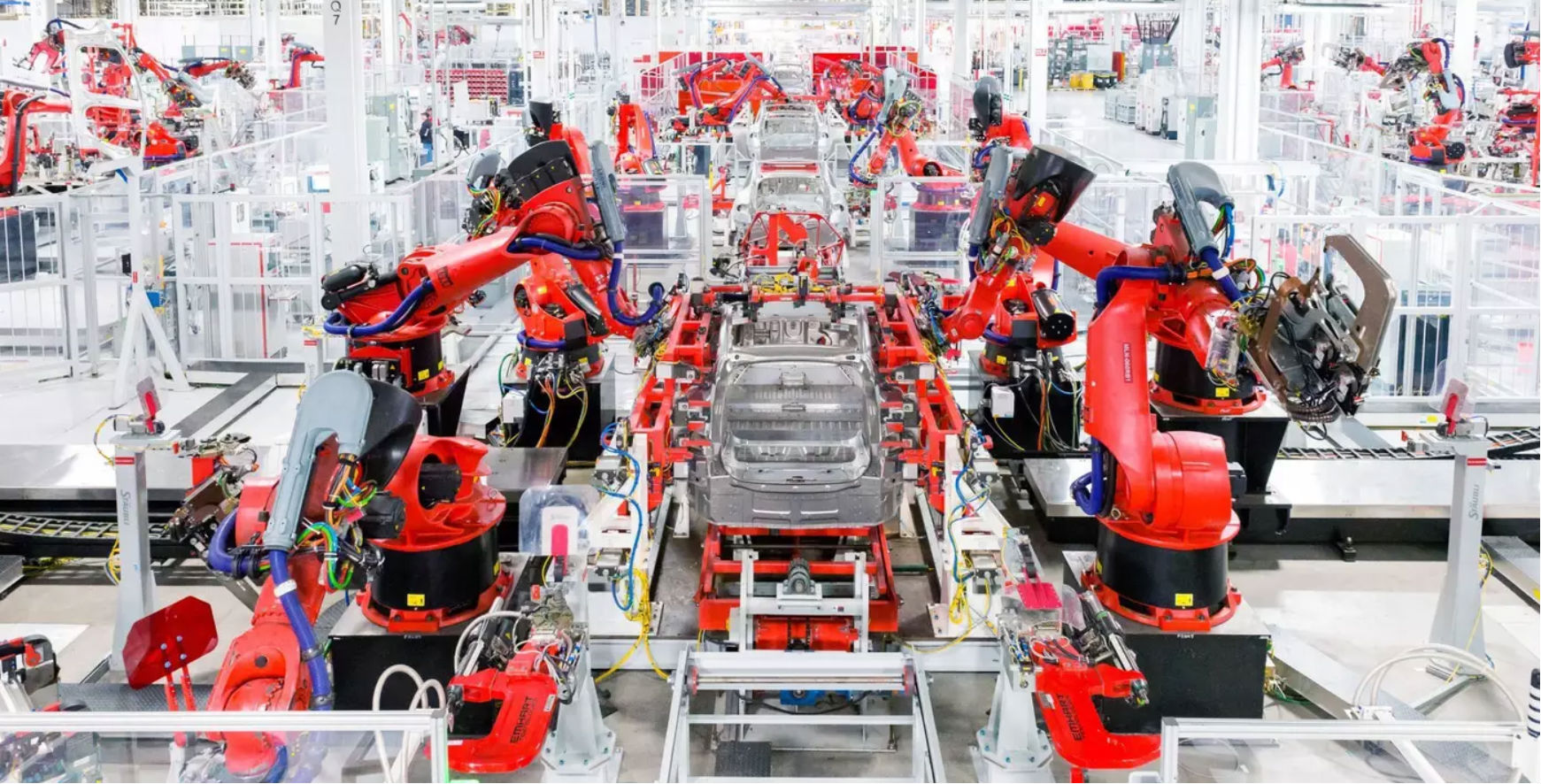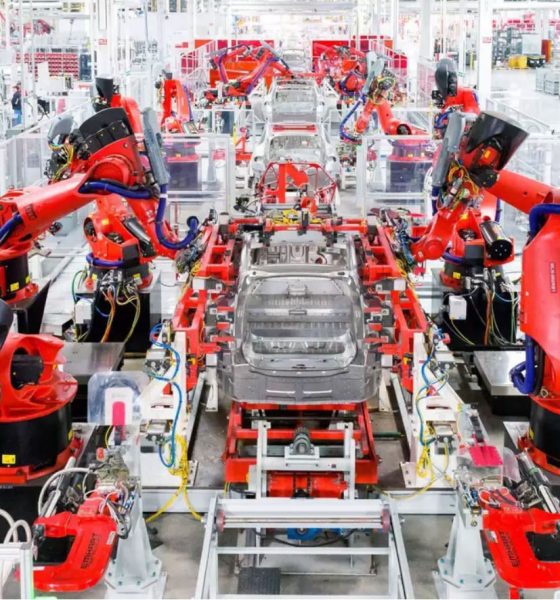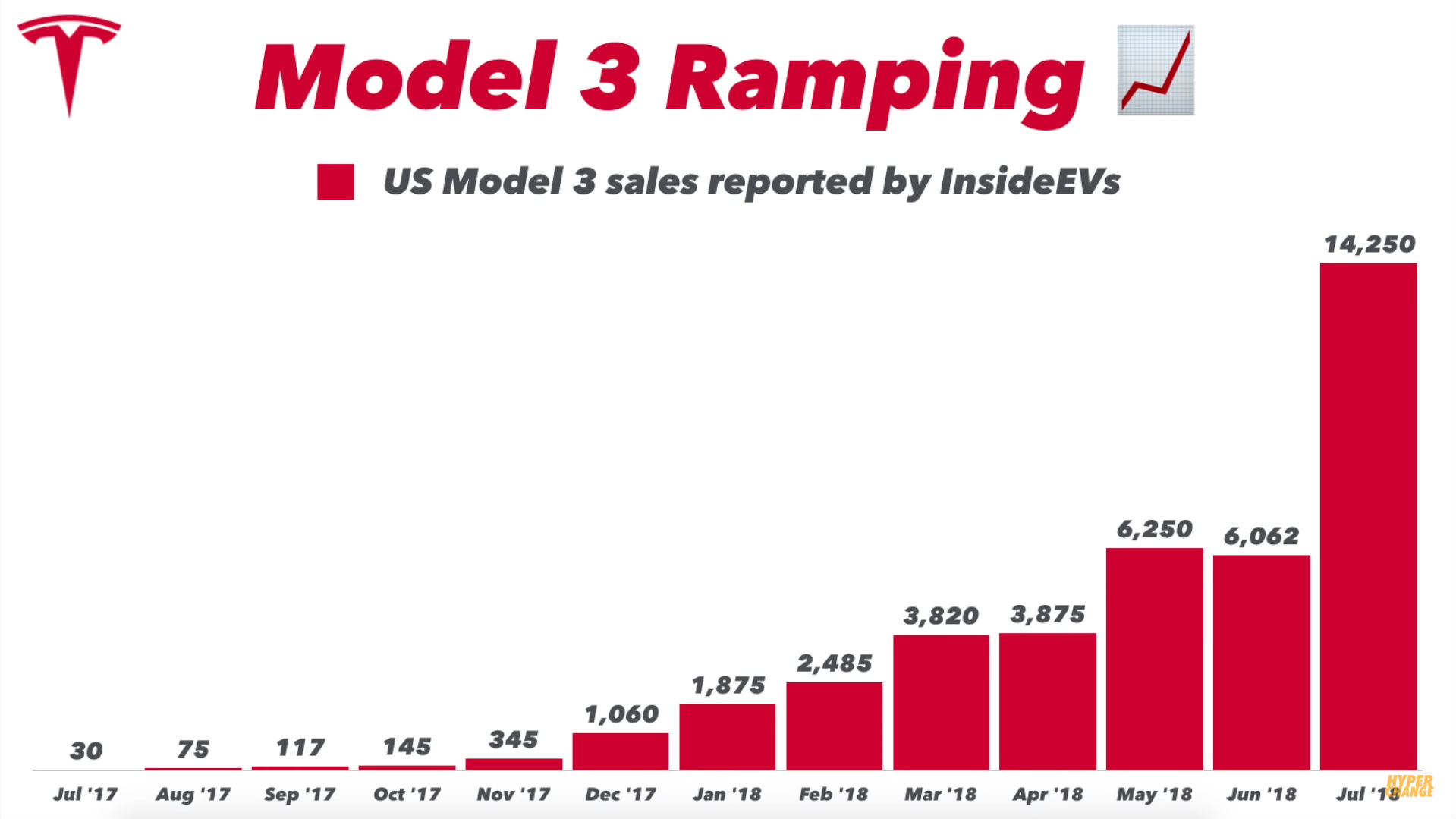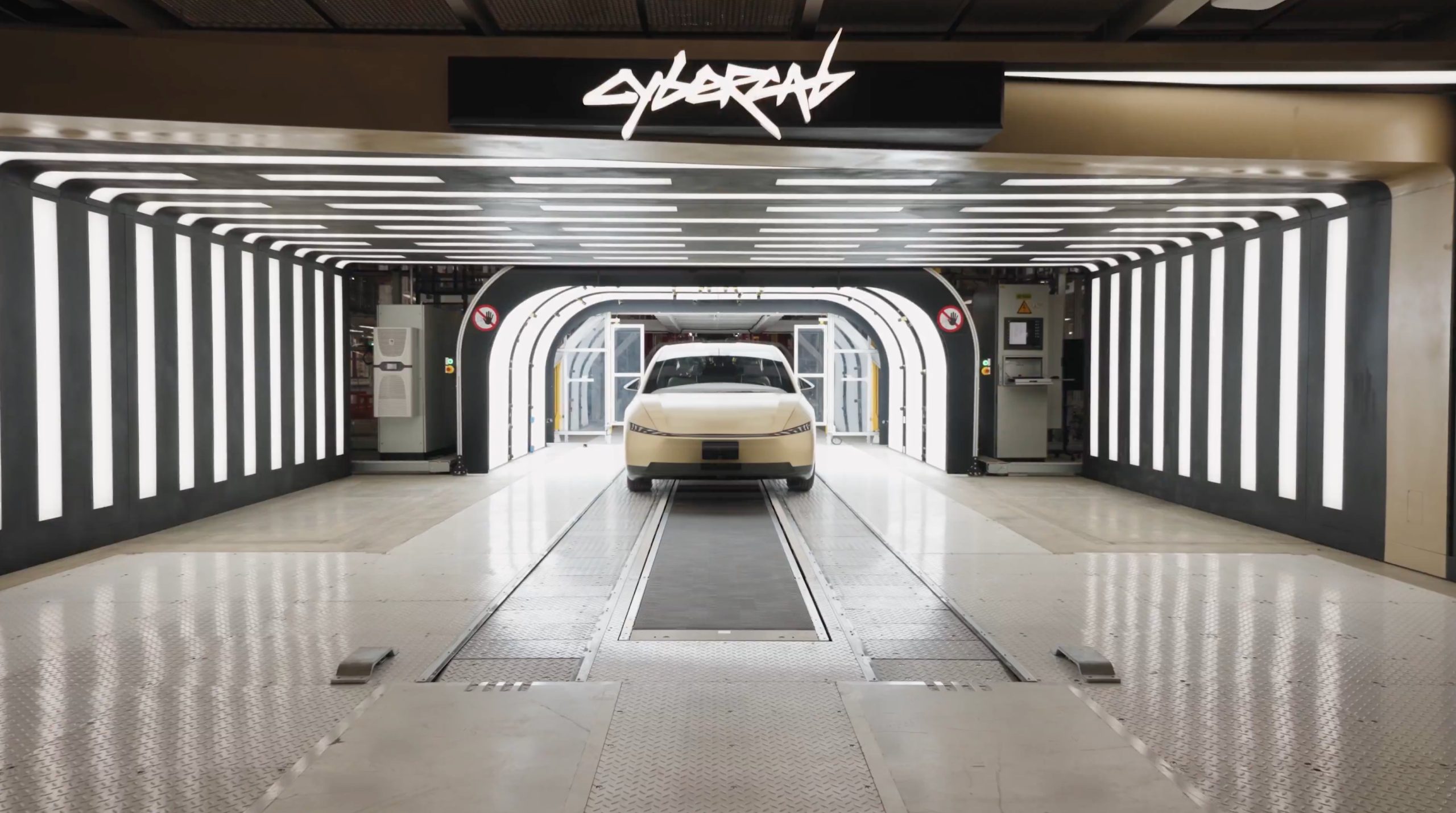

Investor's Corner
Tesla’s Model 3 production ramp is here, and the US auto market is starting to feel it
Since hitting its Q2 target of producing 5,000 Model 3 per week, Tesla appears to have accelerated its efforts to build and deliver the electric car to as many reservation holders as possible. The vehicle’s ramp has been anything but smooth over the past year, but now that Tesla is focusing on sustaining its production of the car, it seems like the results of the Model 3 push are finally starting to bear fruit.
Tesla noted in its Q2 2018 production and delivery report that the Model 3 had a line of about 420,000 reservations as of the final week of June. Deliveries of the Model 3 rose steadily since Tesla started ramping the production of the vehicle. Over Q1 and Q2, sales of the electric sedan increased, culminating in July when Tesla is estimated to have sold as many as 14,250 Model 3 in one month.
With such numbers, the Model 3 became the best-selling electric car in the United States in July, bar none. The rise of the Model 3 was so prominent that last month, it was listed as 7th place in GoodCarBadCar‘s list of America’s Top 20 Best Selling Cars, which included gas-powered vehicles like the Toyota Camry and the Honda Civic. These are vehicles that have held their places in the US’s auto industry for years, and the vast majority of them are more affordable than the Model 3.

Yet, despite this, the Model 3’s sales show that more and more people are starting to commit to Tesla’s electric car. In the company’s Q2 2018 earnings call, Tesla global head of sales Robin Ren stated that the top five vehicles being traded in for a Model 3 were rather surprising, as they were comprised of mostly lower-priced cars such as the Toyota Prius, BMW 3 Series, Honda Accord, Honda Civic, and the Nissan Leaf. Among these vehicles, only the BMW 3 Series is an actual competitor in the midsize luxury segment. The other four are from a more affordable price point.
According to Elon Musk, these trends in the sales of the Model 3 suggest that customers are quite open to spending a little bit more than their usual budget to purchase the electric car. This, Musk believes, is encouraging overall.
“It’s just interesting that people are trading up into a Tesla, so they’re choosing to spend more money on a Tesla than their current car, just based on the trade-in values. A Civic is a very inexpensive car compared to particularly the Model 3 today. So that’s promising from a market access standpoint,” Musk said.
Tesla’s Model 3 ramp appears to be well on its way to sustaining the optimum manufacturing level displayed by the company during its “burst production week” at the end of June. Apart from Tesla announcing that it was able to maintain its 5,000/week Model 3 target in “multiple weeks” in July, the company has also registered an astounding 16,000 new Model 3 VINs in a seven-day period this August. That’s a number that took the company roughly eight months to achieve when the vehicle started production in mid-2017.
As the Model 3 continues to make its presence known in the US auto industry, Tesla appears to be looking into expanding the Model 3’s reach to other countries. Deliveries to Canada have already started in Q2, and just recently, Tesla also announced that it would be offering the Model 3 for viewing in Australia and New Zealand. The company also showcased the Model 3 at the 2018 Goodwood Festival of Speed, where it attracted a good deal of attention from the festival’s attendees.

What then, of competing electric vehicles from other manufacturers? The Model 3’s main rival, the well-reviewed Chevy Bolt, has appears to have plateaued its sales in 2018. Estimates of the Chevy Bolt’s sales this year show that the vehicle has likely sold around 1,100-1,700 units every month since January, putting it below the Model 3’s numbers in 2018 so far. By July, the Model 3 is estimated to have outsold the Chevy Bolt EV 12:1.
Particularly notable is that Tesla’s production ramp for the Model 3 is still just halfway towards its actual target. Tesla aims to eventually produce 10,000 Model 3 per week — a pace the company is seeking to achieve sometime next year. It took a very long time for Tesla to build up the Model 3’s lines to produce 5,000 vehicles per week, but with the milestone achieved, it appears that Tesla’s ramp for its most ambitious electric car is going nowhere but up. Once the Model 3 hits 10,000 per week, even America’s top-selling vehicles like the Toyota Camry could start seeing their sales get taken over by Telsa’s electric sedan.

Investor's Corner
Tesla Full Self-Driving statistic impresses Wall Street firm: ‘Very close to unsupervised’
The data shows there was a significant jump in miles traveled between interventions as Tesla transitioned drivers to v14.1 back in October. The FSD Community Tracker saw a jump from 441 miles to over 9,200 miles, the most significant improvement in four years.

Tesla Full Self-Driving performance and statistics continue to impress everyone, from retail investors to Wall Street firms. However, one analyst believes Tesla’s driving suite is “very close” to achieving unsupervised self-driving.
On Tuesday, Piper Sandler analyst Alexander Potter said that Tesla’s recent launch of Full Self-Driving version 14 increased the number of miles traveled between interventions by a drastic margin, based on data compiled by a Full Self-Driving Community Tracker.
🚨 Piper Sandler reiterated its Overweight rating and $500 PT on Tesla $TSLA stock
Analyst Alexander Potter said FSD is near full autonomy and latest versions showed the largest improvement in disengagements, from 440 miles to 9,200 miles between critical interventions pic.twitter.com/u4WCLfZcA9
— TESLARATI (@Teslarati) December 9, 2025
The data shows there was a significant jump in miles traveled between interventions as Tesla transitioned drivers to v14.1 back in October. The FSD Community Tracker saw a jump from 441 miles to over 9,200 miles, the most significant improvement in four years.
Interestingly, there was a slight dip in the miles traveled between interventions with the release of v14.2. Piper Sandler said investor interest in FSD has increased.
Full Self-Driving has displayed several improvements with v14, including the introduction of Arrival Options that allow specific parking situations to be chosen by the driver prior to arriving at the destination. Owners can choose from Street Parking, Parking Garages, Parking Lots, Chargers, and Driveways.
Additionally, the overall improvements in performance from v13 have been evident through smoother operation, fewer mistakes during routine operation, and a more refined decision-making process.
Early versions of v14 exhibited stuttering and brake stabbing, but Tesla did a great job of confronting the issue and eliminating it altogether with the release of v14.2.
Tesla CEO Elon Musk also recently stated that the current v14.2 FSD suite is also less restrictive with drivers looking at their phones, which has caused some controversy within the community.
Although we tested it and found there were fewer nudges by the driver monitoring system to push eyes back to the road, we still would not recommend it due to laws and regulations.
Tesla Full Self-Driving v14.2.1 texting and driving: we tested it
With that being said, FSD is improving significantly with each larger rollout, and Musk believes the final piece of the puzzle will be unveiled with FSD v14.3, which could come later this year or early in 2026.
Piper Sandler reaffirmed its $500 price target on Tesla shares, as well as its ‘Overweight’ rating.
Investor's Corner
Tesla gets price target boost, but it’s not all sunshine and rainbows

Tesla received a price target boost from Morgan Stanley, according to a new note on Monday morning, but there is some considerable caution also being communicated over the next year or so.
Morgan Stanley analyst Andrew Percoco took over Tesla coverage for the firm from longtime bull Adam Jonas, who appears to be focusing on embodied AI stocks and no longer automotive.
Percoco took over and immediately adjusted the price target for Tesla from $410 to $425, and changed its rating on shares from ‘Overweight’ to ‘Equal Weight.’
Percoco said he believes Tesla is the leading company in terms of electric vehicles, manufacturing, renewable energy, and real-world AI, so it deserves a premium valuation. However, he admits the high expectations for the company could provide for a “choppy trading environment” for the next year.
He wrote:
“However, high expectations on the latter have brought the stock closer to fair valuation. While it is well understood that Tesla is more than an auto manufacturer, we expect a choppy trading environment for the TSLA shares over the next 12 months, as we see downside to estimates, while the catalysts for its non-auto businesses appear priced at current levels.”
Percoco also added that if market cap hurdles are achieved, Morgan Stanley would reduce its price target by 7 percent.
Perhaps the biggest change with Percoco taking over the analysis for Jonas is how he will determine the value of each individual project. For example, he believes Optimus is worth about $60 per share of equity value.
He went on to describe the potential value of Full Self-Driving, highlighting its importance to the Tesla valuation:
“Full Self Driving (FSD) is the crown jewel of Tesla’s auto business; we believe that its leading-edge personal autonomous driving offering is a real game changer, and will remain a significant competitive advantage over its EV and non-EV peers. As Tesla continues to improve its platform with increased levels of autonomy (i.e., hands-off, eyes-off), it will revolutionize the personal driving experience. It remains to be seen if others will be able to keep pace.”
Additionally, Percoco outlined both bear and bull cases for the stock. He believes $860 per share, “which could be in play in the next 12 months if Tesla manages through the EV-downturn,” while also scaling Robotaxi, executing on unsupervised FSD, and scaling Optimus, is in play for the bull case.
Will Tesla thrive without the EV tax credit? Five reasons why they might
Meanwhile, the bear case is placed at $145 per share, and “assumes greater competition and margin pressure across all business lines, embedding zero value for humanoids, slowing the growth curve for Tesla’s robotaxi fleet to reflect regulatory challenges in scaling a vision-only perception stack, and lowering market share and margin profile for the autos and energy businesses.”
Currently, Tesla shares are trading at around $441.
Investor's Corner
Tesla bear gets blunt with beliefs over company valuation

Tesla bear Michael Burry got blunt with his beliefs over the company’s valuation, which he called “ridiculously overvalued” in a newsletter to subscribers this past weekend.
“Tesla’s market capitalization is ridiculously overvalued today and has been for a good long time,” Burry, who was the inspiration for the movie The Big Short, and was portrayed by Christian Bale.
Burry went on to say, “As an aside, the Elon cult was all-in on electric cars until competition showed up, then all-in on autonomous driving until competition showed up, and now is all-in on robots — until competition shows up.”
Tesla bear Michael Burry ditches bet against $TSLA, says ‘media inflated’ the situation
For a long time, Burry has been skeptical of Tesla, its stock, and its CEO, Elon Musk, even placing a $530 million bet against shares several years ago. Eventually, Burry’s short position extended to other supporters of the company, including ARK Invest.
Tesla has long drawn skepticism from investors and more traditional analysts, who believe its valuation is overblown. However, the company is not traded as a traditional stock, something that other Wall Street firms have recognized.
While many believe the company has some serious pull as an automaker, an identity that helped it reach the valuation it has, Tesla has more than transformed into a robotics, AI, and self-driving play, pulling itself into the realm of some of the most recognizable stocks in tech.
Burry’s Scion Asset Management has put its money where its mouth is against Tesla stock on several occasions, but the firm has not yielded positive results, as shares have increased in value since 2020 by over 115 percent. The firm closed in May.
In 2020, it launched its short position, but by October 2021, it had ditched that position.
Tesla has had a tumultuous year on Wall Street, dipping significantly to around the $220 mark at one point. However, it rebounded significantly in September, climbing back up to the $400 region, as it currently trades at around $430.
It closed at $430.14 on Monday.








